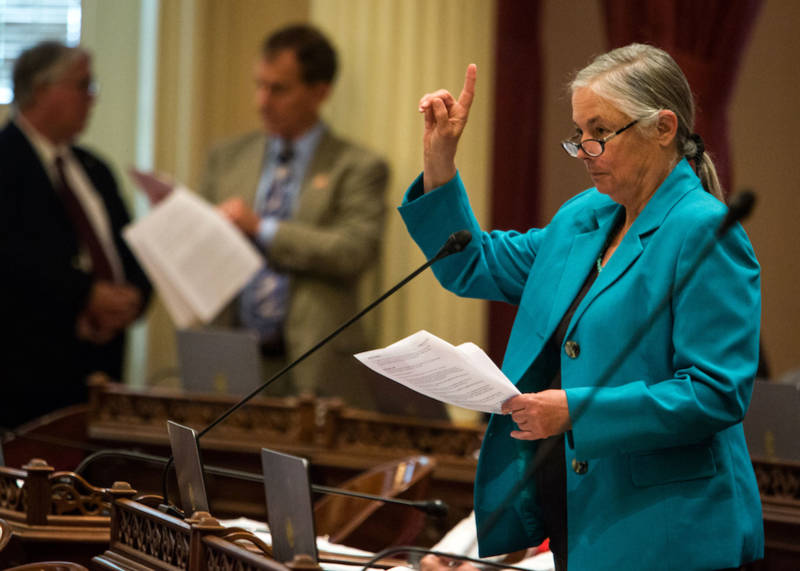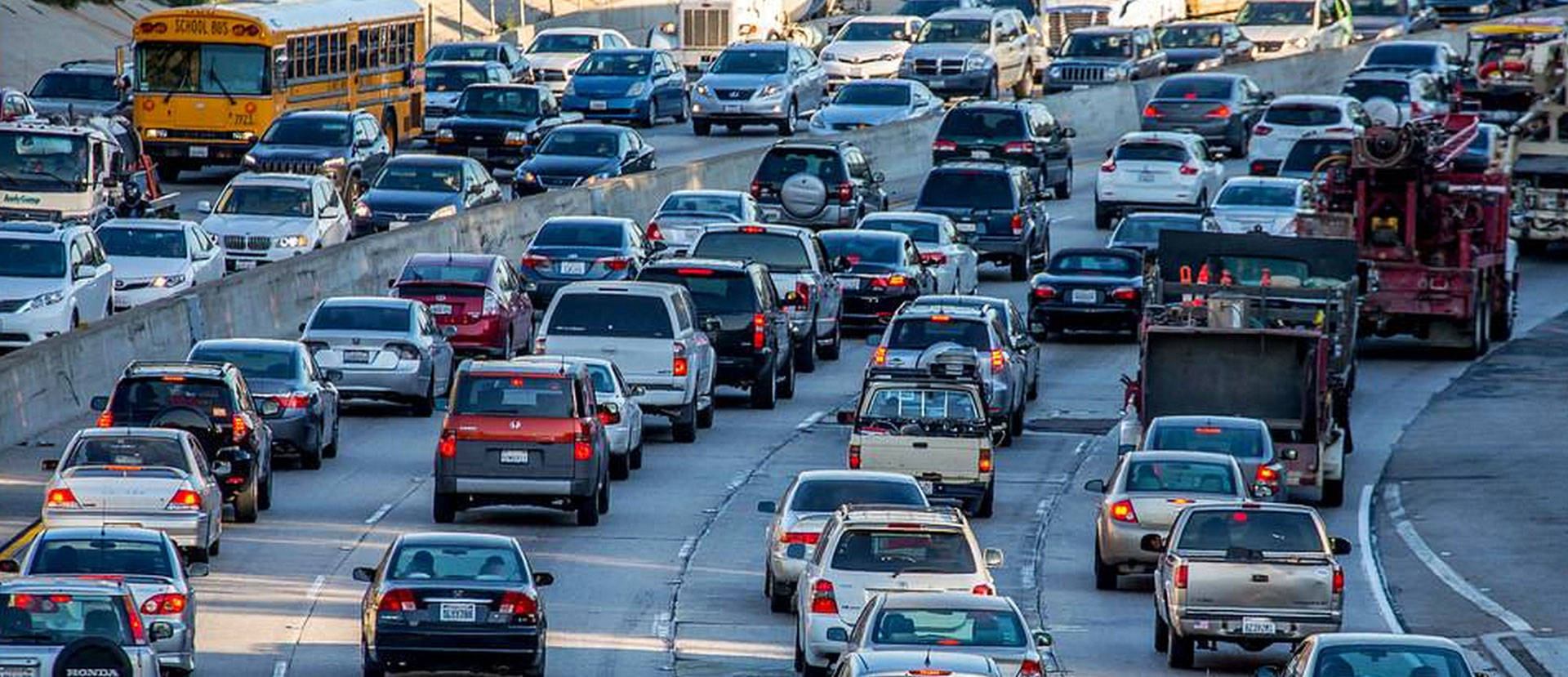Pavley, now serving her last year in the Legislature, wants to extend the approach further into the future. But the Legislature has changed a lot since her earlier bill passed in 2006—no one currently in the Assembly was in office then—and the lower house rejected SB 32 last year amid intense lobbying by the oil industry.
Failure again this month would indicate a major about-face for the California Legislature, reversing course on the environmental leadership role that Brown routinely boasts of in national and international appearances. It would also mark defeat for Pavley, a maverick in the war on global warming who is leaving the Capitol because of term limits.
“It’s really not about me,” she said, but about the Legislature’s commitment to keep combatting climate change.
“This should be easier to pass this year than it was 10 years ago, because now we can show that putting a cap on emissions and rolling it back does send signals for investment (in clean energy businesses). And we’re seeing those new jobs here in California. We have success stories to tell but the challenge has been that the Assembly, of course, hasn’t been paying close attention because they weren’t here.”
Her effort is backed by a big advertising push from environmental groups. NextGen Climate, headed by San Francisco billionaire Tom Steyer, is spending $1.2 million to air television ads around the state criticizing oil companies for “trying to weaken our clean air laws.” The California League of Conservation Voters has launched a social media campaign urging voters to contact Democrats who helped defeat SB 32 last year.
“We saw what happened last year,” said spokeswoman Jenesse Miller, “so this year going in we knew we were going to have to ask those lawmakers to do the right thing and vote the way their constituents want.”
Recent polling found that a majority of Californians support reducing greenhouse gas emissions, even if it means paying more for gas and electricity.
But businesses that use lots of electricity say their costs have already gone up too much—and they fear SB 32 will trigger continual increases without enough oversight from legislators.
“When we’re moving from 2020 to 2030, we need to understand what the policies are going to be that will be available to be used,” said Dorothy Rothrock, president of the California Manufacturers and Technology Association, which opposes the bill. “With simply a goal with nothing else attached to it, it’s throwing it all over to (the Air Resources Board) to do whatever they want to do.”
That board, largely made up of Brown appointees and beyond the Legislature’s control, is already at work on a Plan B—drafting rules that could act as a back-up for Brown’s environmental agenda in case SB 32 withers. But environmentalists want the state’s climate policy to have the political backing of the Legislature, knowing that it’s hard to reverse a law. If the policy is carried out simply as the go-it-alone work of a governor who will leave office in two years, it could be undone, or face a legal challenge.
And the board’s work to require emissions cuts and continue cap and trade—along with a Chamber of Commerce lawsuit asserting that cap and trade is an illegal tax—could also stymie climate policy action in the Legislature. Dean Florez, a former state lawmaker who now sits on the air board, said he’s talked to lawmakers who feel less pressure to vote for a controversial bill because the governor is pursuing his agenda without them.
“They are ‘sitting pretty’ because they can say the Governor has spoken and the courts will ultimately decide and thus there’s no hurry to act on SB 32 now,” Florez said by text message.
These Democrats “can have their cake and eat it too,” he wrote. “They get to say they are with the Governor AND with the oil companies.”
The governor himself won’t say whether he’s pulling for SB 32 or is satisfied to let the air board decide policy. All Brown’s office would say, via an email from spokeswoman Deborah Hoffman is: “We will not meet our world-leading clean air and emission reduction targets unless we solidify and redouble our commitment to the state’s cap and trade program and climate goals beyond 2020 and we will work hard to get that done.”
Senate supporters of SB 32, meanwhile, say they remain undaunted. Senate President pro Tem Kevin de Leon, a Democrat, said extending the targets past 2020 “will get done one way or the other.” And Pavley is getting creative and seeking new allies to rescue her bill. One of those is Assemblyman Eduardo Garcia, a Coachella Democrat who did not support SB 32 last year. The two got to know each other during the global climate negotiations in Paris last year.
Now, Garcia is carrying a bill to give legislators more oversight of the Air Resources Board, and it is linked to Pavley’s emissions reductions bill—each one can only pass if the other one does too. The alliance illustrates how Pavley is working to win over previous opponents, particularly Democrats who represent people in struggling inland areas who could be hit harder by rising gas and electricity prices.
“The goal is to be more encompassing of California’s economically disadvantaged communities,” Garcia said of his bill. “I think it is a piece of the puzzle in order to get people closer to supporting Senate Bill 32.”
Another puzzle piece: money.
Assemblyman Jim Cooper, an Elk Grove Democrat who leads the caucus of moderate Democrats, argues that too many incentives for solar panels and electric vehicles have gone to California’s wealthy enclaves. “Take care of the poor people first,” he said.
Democrats who objected to SB 32 last year could be persuadable if, say, their districts get new money for environmental projects. And it just so happens the state is sitting on $1.4 billion from cap and trade auctions—money that legally must be spent on projects that reduce emissions.
This post has been updated.


